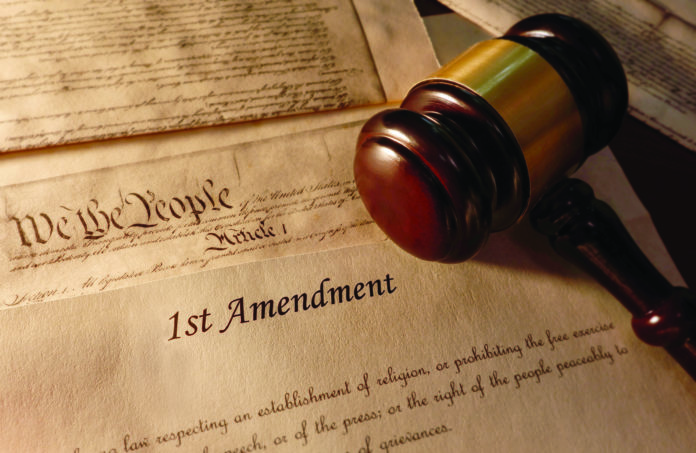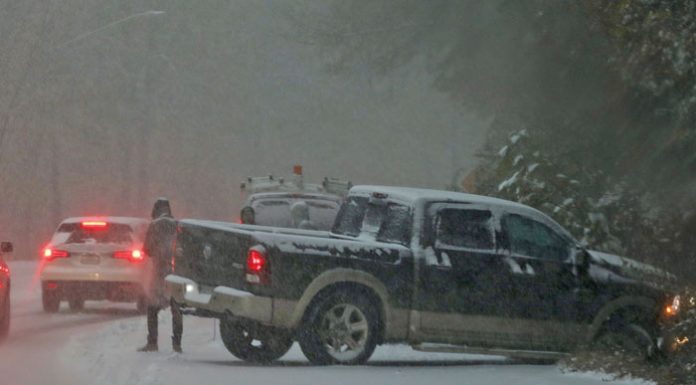Everyone knows that the US Constitution protects free speech. But the First Amendment doesn’t only prohibit government from preventing what we choose to say; it also prohibits its forcing a citizen to say what he doesn’t want to.
That fact is central to the case of Lorie Smith, a Denver-area graphic and website designer, which the Supreme Court last week put on its docket, and will hear arguments on in the fall.
Ms. Smith wants to expand her business, “303 Creative,” to designing wedding websites. But her religious beliefs would lead her to decline a wedding website design request from a couple whose relationship she, as a Christian, considers immoral. She also wants to post a statement on her website to that effect. “Lorie,” her lawyer notes, “respectfully refers such requests to other website designers.”
The web designer’s stance and planned statement, however, run afoul of a Colorado anti-discrimination law protecting, among others, people who might wish to form the sort of unions that many religious citizens (including Jewish ones) consider objectionable.
The plaintiff sued her state, arguing that its law violates both her free speech and religious rights.
In a 2-1 ruling last year, the Denver-based 10th US Circuit Court of Appeals denied Ms. Smith’s attempt to overturn a lower court ruling against her. The Appeals Court said that Colorado had a compelling interest in protecting the “dignity interests” of members of marginalized groups.
In taking the case, the High Court said that it would look only at the free speech issue, not the religious rights one. What it will be weighing, in other words, is whether a “public accommodation law” (a law governing the provision of services to the public) that requires an artist to speak—including to create content—or stay silent—including to not post a statement of religious principles, like the one Ms. Smith wishes to post —violates the First Amendment.
Had the High Court agreed to also include in its consideration the religious rights issue, it would have had the opportunity to revisit—and, perhaps, overturn— its famous (or, perhaps better, infamous) 1990 “Peyote decision.” That ruling held that when a law is not specifically aimed at an act engaged in for a religious reason, but is rather a “neutral law of general applicability” that hampers a religious practice, there can be no claim that it violates the First Amendment’s protection of the free exercise of religion, despite any impact the law might have on religious activity.
That decision arose from a case in Oregon involving the use of the outlawed hallucinogenic cactus peyote in Native American religious ceremonies. The Court’s ruling in that case, Employment Division v. Smith (another Smith, Alfred Leo—hey, it’s a pretty common surname), was assailed last year by Justices Clarence Thomas, Samuel A. Alito Jr. and Neil M. Gorsuch, who wrote in a decision regarding a Philadelphia Catholic social services agency’s provision of foster care, that the time had come to overrule the 1990 decision.
Justice Alito wrote that, “As long as it remains on the books, [the peyote case] threatens a fundamental freedom. And while precedent should not lightly be cast aside, the court’s error in Smith should now be corrected.”
That revisiting will have to wait for another day. For now, though, it is still of considerable import to religious Americans that the High Court will decide whether laws of general applicability can have negative impact on the Constitutional right to free speech.
In a dissent in the 10th Circuit’s ruling against Ms. Smith, Chief Judge Timothy M. Tymkovich offered a quote from George Orwell: “If liberty means anything at all, it means the right to tell people what they do not want to hear.”
He went on to contend that “the majority takes the remarkable—and novel—stance that the government may force Ms. Smith to produce messages that violate her conscience.
“It seems we have moved,” he wrote, “from ‘live and let live to ‘you can’t say that.’”
Come fall, we’ll get to hear what the highest court in the nation has to say.





















